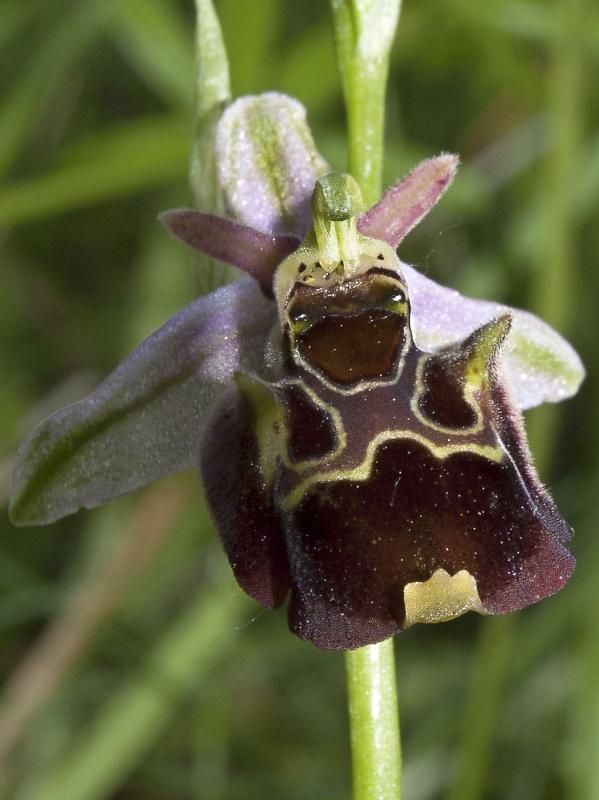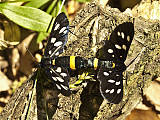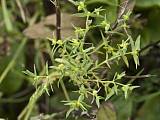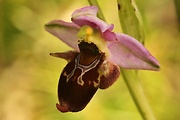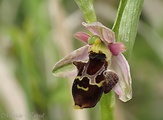Nasledujúce fotografie
Diskusia k fotografii

O, another one, that's a great series now!
Reagovať na správu

Ďakujem všetkým
__________________
Thanks, it is really interesting plant,but even more interesting fact is that we are cultivating Ophyrs sp. in our university.....few years ago i do not even dream that in vitro cultivation of middle-europaean orchids is even possible...
Reagovať na správu

It is interesting....My job is cultivation of Epipactis sp. (but I'm only first grader on university....) But the guy which is teaching me everything about terrestrial orchids , succesfuly cultivated spiranthes, ophrys, dactylorhiza, orchis ,serapias,himantoglossum etc.... He is hero...
I admire every botanist.Especially those who do rare species and therefore they are saving gene pool and diversity...like you
I think that we do not have A.physocalyx....I have seen it only on pictures made by your mother...
Reagovať na správu

That is great really, it is something that may help very much in the conservation of rare plants indeed.
Astragalus physocalyx is species with very interesting history, it was discovered by the Hungarian botanist Imre Frivaldsky. However he did not realize that he has found a new species. It was described as new species some time later by the Russian botanist B. Fischer, monographer of Astragalus, who realized this is a very peculiar and very ancient Astragalus. For a long time after its discovery it was known only from a single hill nearby Plovdiv town in Bulgaria. The intensive collecting in the 19th century led to the extinction of the plant. Rather surprisingly in 1960s two plants were found in the southwestern part of Bulgaria, from where the two plants were transferred in Sofia Botanical Garden, where they were kept with lots of difficulties and reproduced. At some point there were seven plants and they were transferred back to the Plovdiv hill, where they survived for a while, but died somewhen in 90's. Then A. physocalyx was listed as globally extinct. Well, for a short time, because it was found in Macedonia and Greece not far from the second Bulgarian locality. Few years ago, if I remember right, colleagues of mine were searching in the area of the second locality and they found about 10 plants that were surviving. My photos of this Astragalus and the photos of my mother are from this locality.
Reagovať na správu

I see...it have interesting history.....
So this species was never common. So there is only one locality...
And now what is the situation with cultivation of A. physocalyx. Are you successful?
Reagovať na správu

Well, I am not involved myself in this particular project, but as far as I know the colleagues managed to reproduce it by tissue cultures and the idea is when the plants are grown to plant them in the original place of growth and support the population. I may ask for more details if you are interested or send you the contacts of some of my colleagues that are working on this task. I could also send you the contacts of our orchid specialist, she is not involved in tissue cultures, but you may find this contact interesting as she is really an expert in the orchids-field.
Reagovať na správu
Váš názor alebo poznámka
Pred zaslaním príspevku do diskusie je potrebné prihlásiť sa použitím Vášho prihlasovacieho mena a hesla.
Informácie o fotografii
Autor fotografie:
Tomas Figura
Kvalita:
Chránený druh
Čas a miesto:
26. 06. 2010, biele karpaty
Identifikácia:
Identifikoval Tomas Figura (orthe)
Exsikát neexistuje
Ďalšie informácie:
ID: 249178; Zverejnené: 30. 12. 2010, Model:E-510; Clona:f/16.0; Čas:1/100s; Blesk:Áno; Ohnisková vzdialenosť:42/1mm
Zaradené:
Užitočné linky:
Ďalšie fotografie
